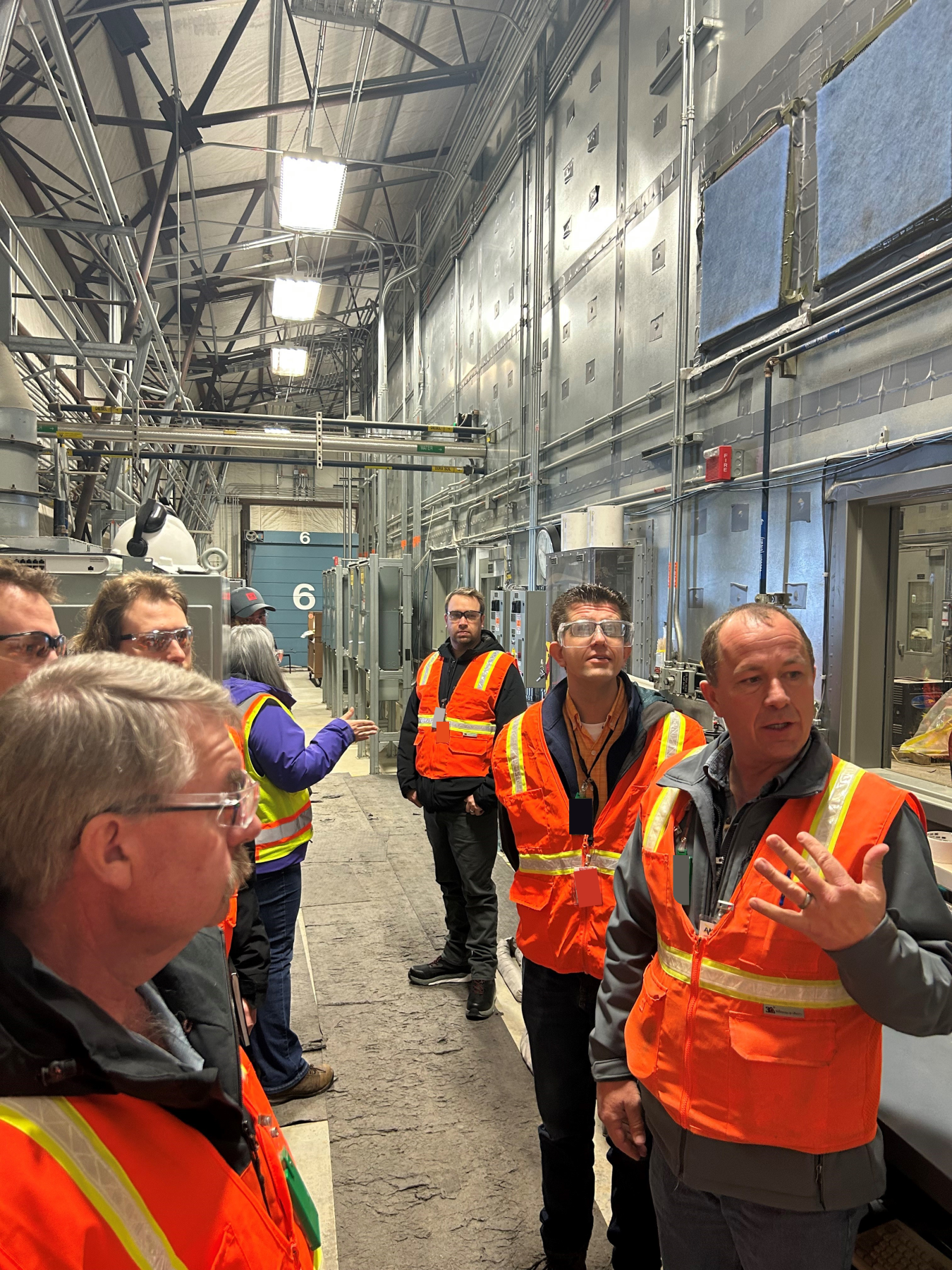EM contractor Idaho Environmental Coalition (IEC) hosted a delegation from Canada’s cleanup program recently to share its environmental remediation and waste management successes and challenges at the Idaho National Laboratory (INL) Site.
Office of Environmental Management
April 25, 2023IDAHO FALLS, Idaho – EM contractor Idaho Environmental Coalition (IEC) hosted a delegation from Canada’s cleanup program recently to share its environmental remediation and waste management successes and challenges at the Idaho National Laboratory (INL) Site.
Environmental cleanup at the Canadian nuclear facilities is in its infancy compared to the INL Site, which was added to the U.S. Environmental Protection Agency’s (EPA) National Priorities List of Superfund Sites in 1989. EM, the EPA and state of Idaho made all cleanup decisions under the 1991 Federal Facility Agreement and Consent Order.
IEC managers from waste management, decontamination and decommissioning (D&D), radiological protection and operations met in Idaho Falls for a day of presentations and dialogue with managers from Canadian Nuclear Laboratories, located in the provinces of Manitoba and Ontario.
The next day, the Canadian delegation toured INL Site facilities to see EM work in progress. Cleanup continues at just three INL Site facilities: the Radioactive Waste Management Complex, Idaho Nuclear Technology and Engineering Center (INTEC) and Test Area North.

Jason Chapple, bottom right, Idaho Environmental Coalition (IEC) director of Accelerated Retrieval Project (ARP) Operations and Remediation, discusses preparations for demolition of one of the ARP enclosures with a delegation from the Canadian Nuclear Laboratories (CNL) recently. CNL will demolish several facilities as part of a larger cleanup mission at the Chalk River and Whiteshell laboratories. During its visit to the Idaho National Laboratory Site, the Canadian delegation met with IEC directors and staff and toured facilities to aid in its planning for decontamination and decommissioning, and cleanup.
Attendees toured the Accelerated Retrieval Project’s soft-sided buildings where targeted buried waste exhumation took place from 2005 to 2022. IEC will demolish the buildings and construct a soil cover over the entire 97-acre landfill to protect the underlying aquifer.
Next, the group toured the Advanced Mixed Waste Treatment Project (AMWTP), where IEC crews are treating, characterizing, repackaging and shipping transuranic and low-level waste to EM’s Waste Isolation Pilot Plant and other offsite repositories for disposal. The Canadians said they were impressed with AMWTP’s Treatment Facility where crews use robotic and remotely operated equipment to sort and repackage waste.
At INTEC, the group viewed how spent nuclear fuel is stored in underground and horizontal concrete vaults as well as a building at INTEC where the fuel is air-cooled in vertical racks. The Canadians saw how a repurposed hot cell at the New Waste Calcining Facility is used to open, treat and repackage remote-handled transuranic waste. That facility converted high-level radioactive liquid waste from INTEC tanks into a stable, granular solid called calcine until May 2000.
The IEC tour hosts also took the delegation to the Idaho CERCLA Disposal Facility, the INL Site’s landfill for cleanup program-generated contaminated soil and debris. In the next few years, a new cell will be added to the facility to extend its mission until 2050. CERCLA stands for the Comprehensive Environmental Response, Compensation and Liability Act.
The Canadian visit was the idea of IEC parent company Jacobs and facilitated through Dan Coyne, IEC senior director of Waste and D&D, who spent four years at Canadian Nuclear Laboratories with Jacobs.
“The nuclear industry is a tight-knit community,” he said. “Sharing our lessons learned with our Canadian colleagues not only benefits the industry itself, but it also continues the excellent relationship our two countries have. Everyone wins.”
To receive the latest news and updates about the Office of Environmental Management, submit your e-mail address.

